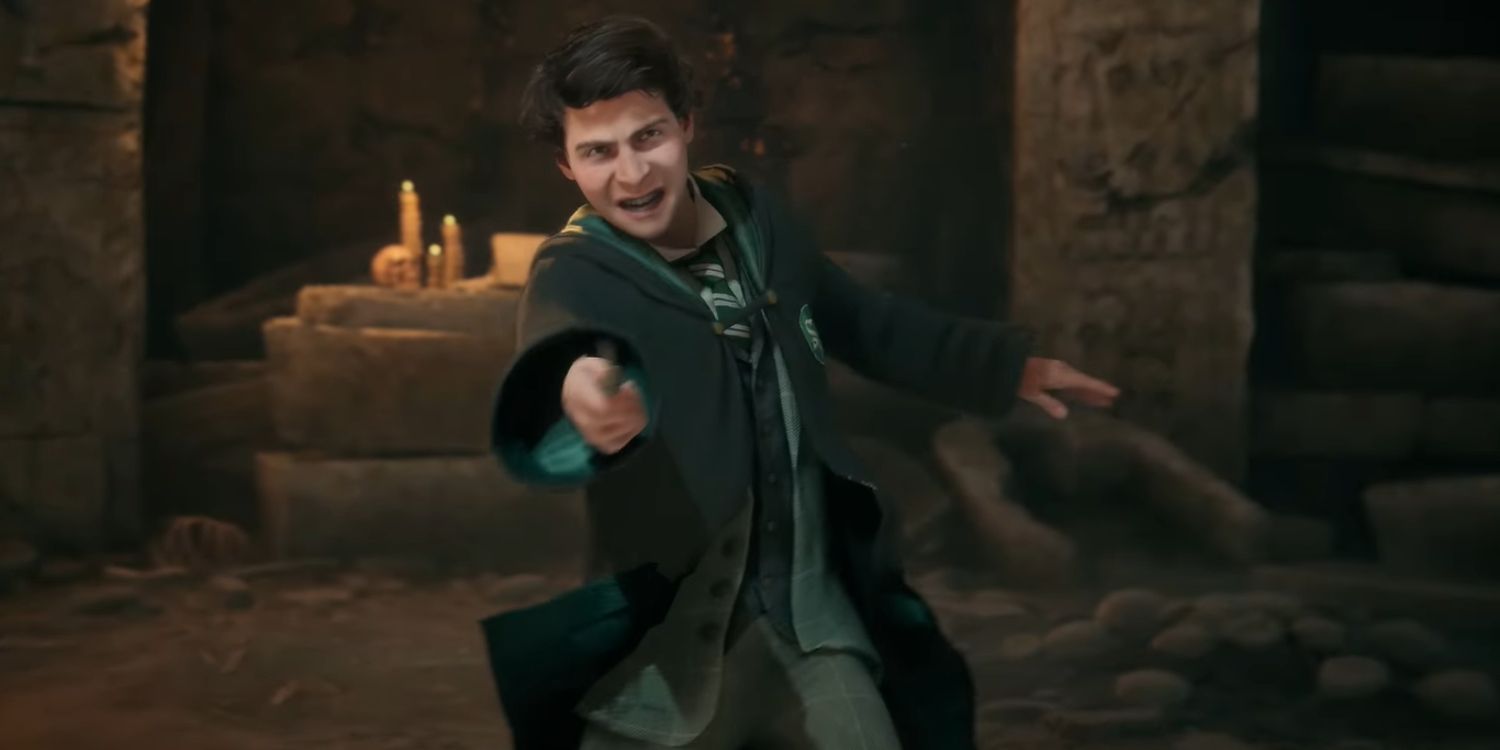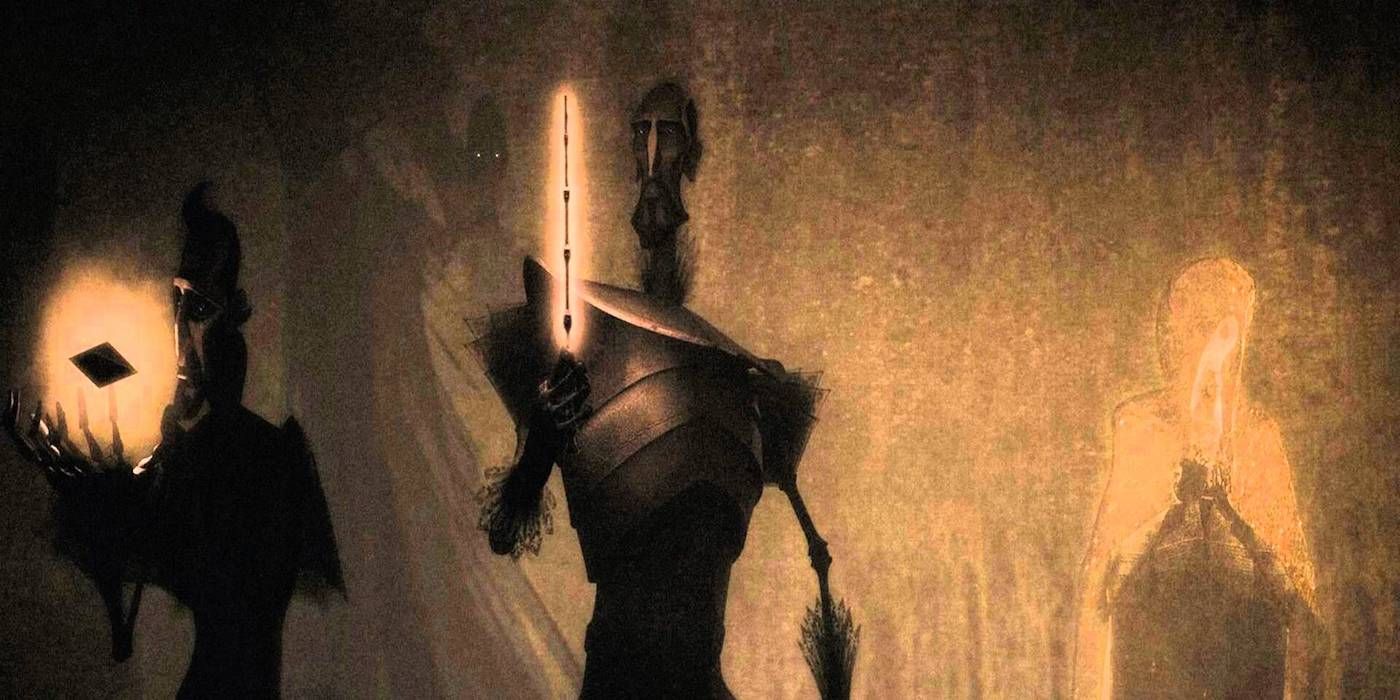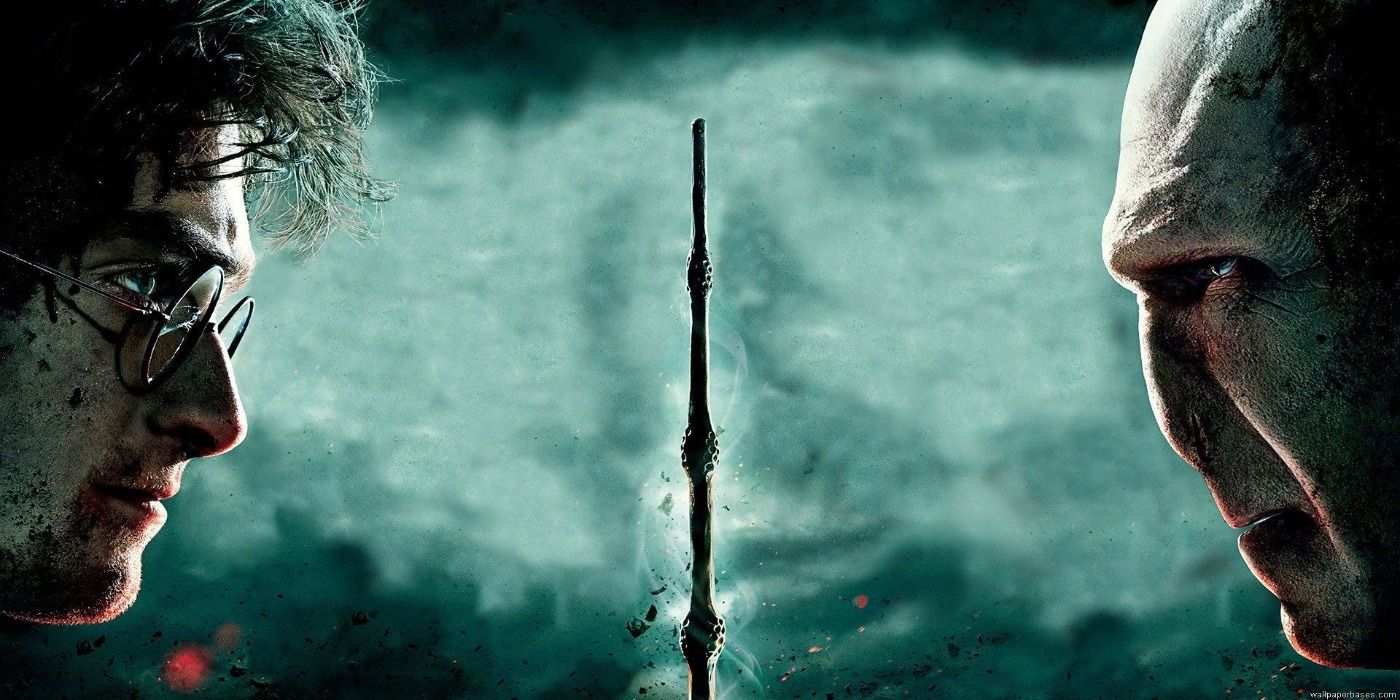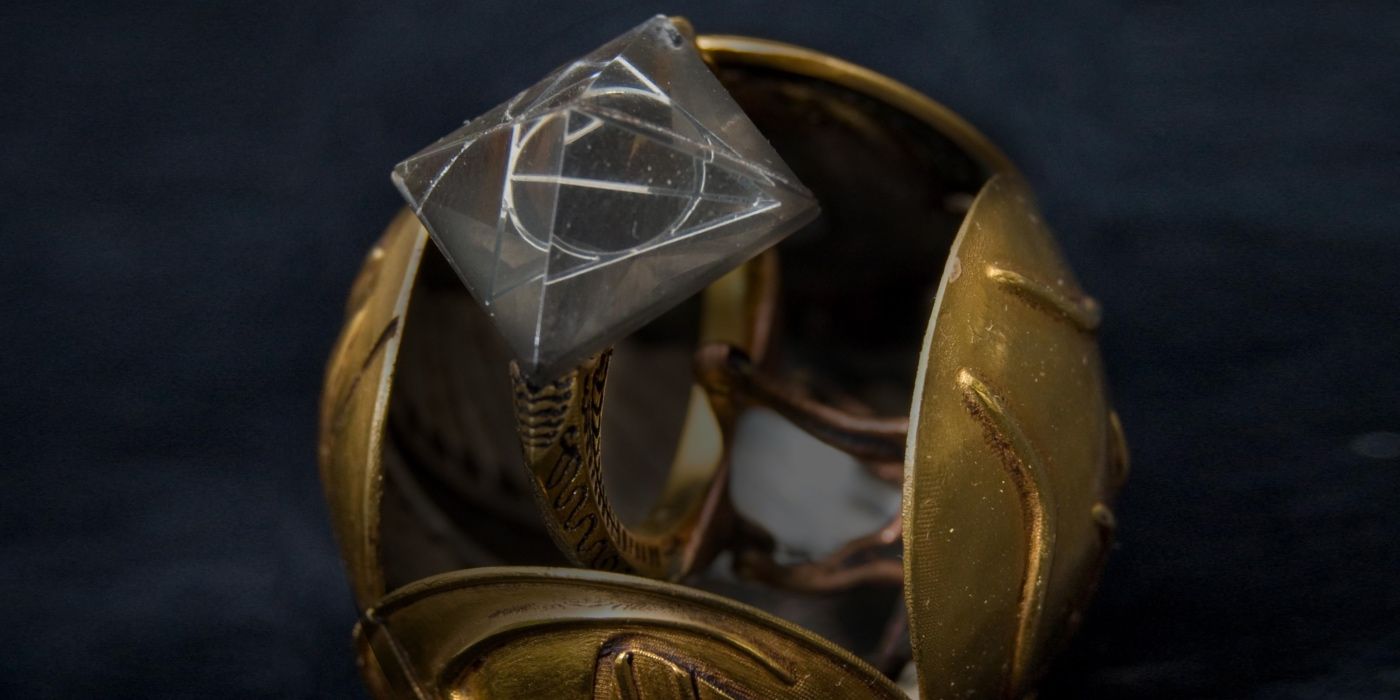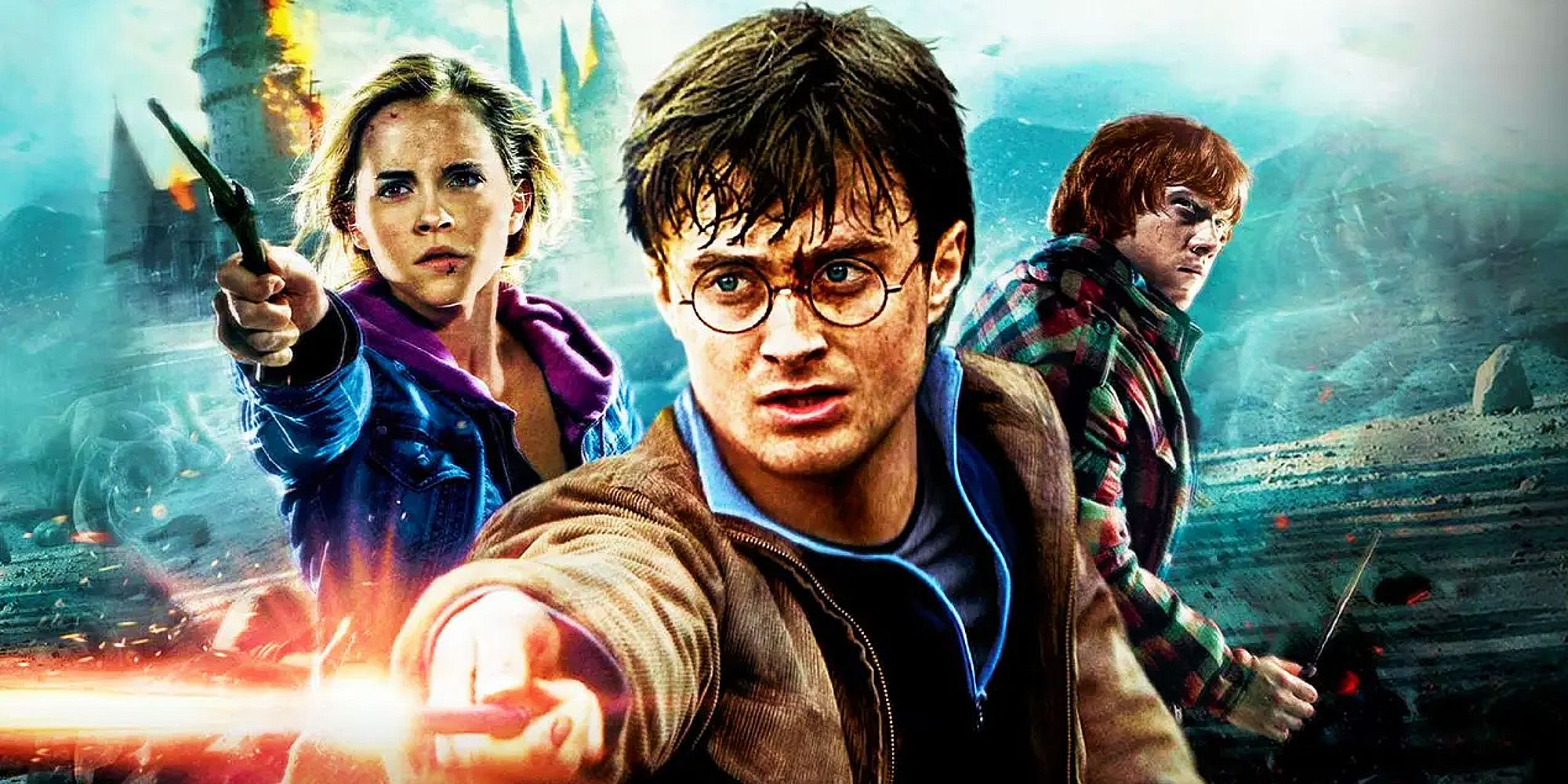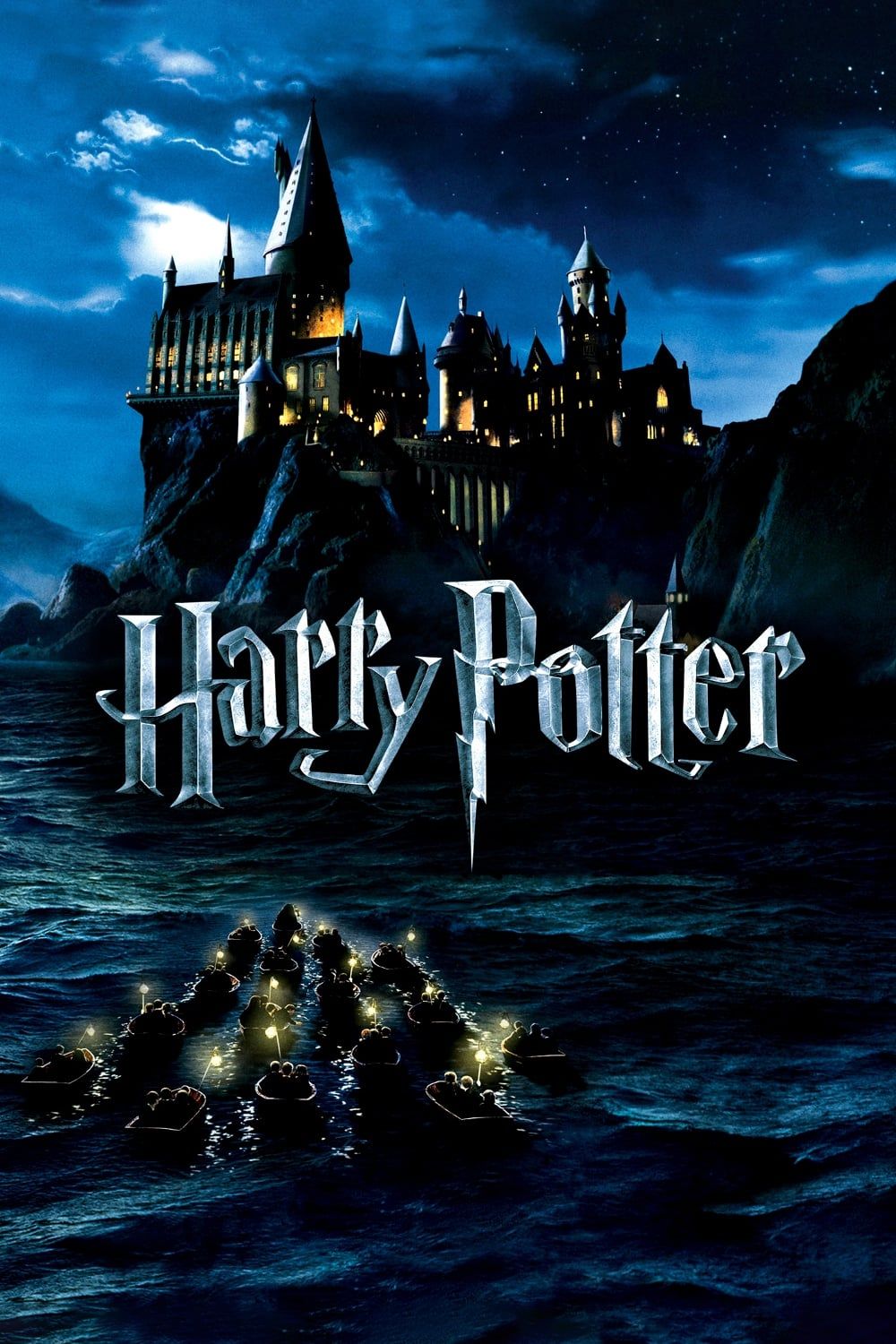How Harry Potter came back to life and survived Avada Kedavra in the forest at the end of Harry Potter and the Deathly Hallows can be confusing for even hardcore fans of the books and films. Themes of love, emotions, and the heart are woven into the “science” behind how certain spells work — including Avada Kedavra, the killing curse. Family and everlasting love were the driving force behind Harry’s survival and Voldemort’s subsequent defeat. However, how these themes translated into Harry surviving the Harry Potter killing curse requires a little more explanation.
Harry Potter used Unforgivable Curses himself, as have many other characters, but Voldemort’s Killing Curse was the franchise’s most infamous use of Avada Kedavra. However, how Harry Potter came back to life in Harry Potter and the Deathly Hallows confused many fans. While it went unexplained in the films, HBO’s upcoming Harry Potter reboot television series means the mystery could eventually be explained on the screen. Here’s a breakdown of why he survived, and why Avada Kedavra didn’t kill Harry Potter in the final battle.
Harry Potter’s History With The Killing Curse
Harry Survived Avada Kedavra Multiple Times
Harry Potter became the target of the Harry Potter Killing Curse multiple times before he survived Avada Kedavra in the forest. On Halloween night in 1981, Lord Voldemort ventured to Godric’s Hollow to kill Harry. James Potter was killed trying to save his wife and child. Lily Potter shielded her infant son when Voldemort unleashed the Killing Curse, causing it to bounce back and disintegrate his physical body. Harry survived but was left with a lightning-shaped scar on his forehead and a nickname: “The Boy Who Lived.”
Herpo the Foul, one of the first Dark wizards, created the Unforgivable Curses.
Voldemort used the Unforgivable Curse, Avada Kedavra, at least three more times on his sworn enemy. The Dark Lord killed Cedric Diggory using the Killing Curse during the final task of the Triwizard Tournament. Harry watched in horror as a bright green light flashed before his eyes, his friend’s lifeless body hitting the ground before the Boy Who Lived had time to blink. After taking Harry’s blood, Voldemort ordered him to a duel. Voldemort used the Cruciatus Curse and the Imperius Curse before turning to the Killing Curse.
Voldemort used the
Harry Potter
killing curse again in the Forbidden Forest and then again during the final duel
Harry, at this point, magically outgunned and nowhere near powerful enough to face He Who Must Not Be Named head-on, found a distraction during the duel and was able to use the Portkey to get back to Hogwarts with Cedric’s body. Voldemort used the Killing Curse again in the Forbidden Forest and then again during the final duel that saw the Dark Lord fall once and for all.
|
The Harry Potter Unforgivable Curses |
|
|---|---|
|
Killing Curse (Avada Kedavra) |
Instant Death |
|
Crucio (Cruciatus Curse) |
Inflicts Excruciating Pain |
|
Imperio (Imperius Curse) |
Take Control Of Another’s Body |
Harry’s encounter with the Killing Curse in the Forbidden Forest has resulted in a lot of confusion. However, there are essentially two main reasons in the changing Harry Potter canon that explain why he didn’t die at Voldemort’s hands as an adult.
The History Of Avada Kedavra
The Curse Causes Instant Death
The Avada Kedavra curse is one of three Unforgivable Curses and is an unlockable curse that causes instant, painless death. There are no visible injuries; it often appears as a green flash of light before the person dies. The first known use of the curse came during the Middle Ages as a spell created by Dark witches and wizards who wanted to find a way to end a duel quickly. However, in 1717, the Ministry of Magic quickly banned the three Unforgivable Curses due to their dark nature.
A wizard or witch can block Avada Kedavra, but if it touches them physically, the person will die no matter what they do.
Any wizard who uses the Avada Kedavra (translated from Aramaic dialect to mean “let the thing be destroyed“) receives a lifetime sentence in Azkaban. Only the darkest of wizards ever attempted the three Unforgivable Curses. This changed during the First Wizarding War when Bartemius Crouch Senior legalized the curses when used against Death Eaters to help win that war. However, this was only used in wartime, and the curses were banned once again when the war was won.
There were still Dark Wizards who used the Avada Kedavra, though, with the most notable instance being when Voldemort used it to kill Lily and James Potter and attempted to kill baby Harry Potter on October 31, 1981. While it backfired, Voldemort eventually returned to life. On August 1, 1997, he took over the Ministry of Magic and made the Avada Kedavra legal to use again by any witch or wizard. He even had them taught at Hogwarts until the Second Wizarding War.
The Elder Wand Enabled Harry Poter To Survive Avada Kedavra
The Deathly Hallows Protected Harry During The Battle Of Hogwarts
One of the reasons Harry lived after being hit by the Killing Curse in The Deathly Hallows is his mastery of the Elder Wand. There was a belief that obtaining the Deathly Hallows would grant the finder some immortality, which is how Harry survived Avada Kedavra in the forest. The Deathly Hallows were directly connected to the legend from The Tales of Beedle the Bard. In the tale, the Peverell brothers tricked Death, who in return offered them “gifts” intended to corrupt them and lead to their deaths.
The rewards included the Elder Wand, the Resurrection Stone, and the Invisibility Cloak. Harry notably possessed all three items that comprised the Deathly Hallows when Voldemort tried to kill him the night of the Battle of Hogwarts, which is partly how Harry survived Avada Kedavra in the forest. He received the Cloak of Invisibility from his father, James, and obtained the Resurrection Stone from Dumbledore after it was hidden in a Golden Snitch.
While it’s unclear whether there’s any truth to the “Master of Death” being immortal, the Elder Wand will resist causing harm to its master — who, via a roundabout series of events, was Harry.
Draco was the previous owner of the Elder Wand, but Harry successfully disarmed him, making Harry the new master even while the Elder Wand was technically in Voldemort’s possession. His mastery of the Elder Wand explains why Voldemort failed to kill Harry during the Battle of Hogwarts, but there’s also another explanation for why Harry survived the Harry Potter Killing Curse in the Forbidden Forest.
Harry’s Protection Against Lord Voldemort
Lily’s Sacrifice Continued To Protect Harry Long Into Adolescence
Lily’s sacrifice is partially how Harry survived Avada Kedavra in the forest. When Lily sacrificed herself to save Harry in Godric’s Hollow, he was protected by magic’s strongest defense: love. Dumbledore explained to Harry at a young age how Lily’s love lived on and served as a protection against the Killing Curse. Harry remained protected when he moved in with the Dursleys because, as sisters, Lily and Petunia shared the same blood.
Dumbledore knew this, which is why he chose the family to take care of Harry after he became an orphan and insisted on Harry returning to the Dursley family every summer despite their ill treatment of him. Lily’s protection still encompassed Harry when he started at Hogwarts.
Voldemort could not touch Harry; if he tried, he would be a victim of serious pain — as proven in Harry Potter and the Sorcerer’s Stone. The love protection spell lifted when Harry turned 17 in Harry Potter and the Deathly Hallows, so he had to be hurried away from the Dursleys’ house in the dead of night. However, Lily’s protective charm was unwittingly extended by Voldemort himself, who ended up spelling his doom with the Killing Curse. This is another reason Harry Potter came back to life.
Lily’s Protection In Voldemort’s Blood Saved Harry
Sharing DNA With Harry Meant Voldemort Couldn’t Kill Him As Easily
When Lord Voldemort returned Harry Potter and the Goblet of Fire, he used Harry’s blood, which is also partially how Harry survived Avada Kedavra in the forest. At first, it seemed that the love protection was canceled out when Voldemort used Harry’s blood since he could now touch Harry without experiencing pain. However, Lily’s protection simply took on a new form when he created a body from Harry’s blood. As Dumbledore explained, “His body keeps her sacrifice alive, and while that enchantment survives, so do you.”
Lily’s love spell was still in effect. Harry was sent to limbo, where he encountered Dumbledore.
When Voldemort hit Harry with Avada Kedavra in the forest, it destroyed the Horcrux that resided in Harry but left the boy himself alive. Since Voldemort was still alive, Lily’s love spell was still in effect. Harry is sent to limbo, where he encounters Dumbledore. He was given a choice to die and finally rest, or return home, and he chose the latter. Nagini remained as the last of Voldemort’s seven Horcruxes until Neville destroyed her with the Sword of Gryffindor. With no Horcruxes remaining as Voldemort’s primary defenses, this left the Dark Lord vulnerable.
Harry returns from limbo and faces off against Voldemort one last time. Just as his mother did for him at Godric’s Hollow, Harry sacrificed himself for his friends and loved ones by standing in front of his foe unarmed. This put a new protection spell around those at Hogwarts. Harry then reveals the truth about being the master of the Elder Wand.
Since the Elder Wand wouldn’t cast the Killing Curse on its owner, the spell rebounded, killing Voldemort in the process. The outcome of this climactic Harry Potter event wouldn’t have been possible without Lily Potter and her love for her son.
How Harry Potter Came Back To Life in Deathly Hallows
Harry Potter Is The “Master Of Death”
While many wondered how Harry survived Avada Kedavra in the forest, how Harry comes back to life afterward is an equally pressing question. Of all the Harry Potter characters killed off in The Deathly Hallows, only Harry himself successfully returned to life after being hit with the Killing Curse (for a second time). The main reason for this is fairly obvious: Harry was the master of all three of the titular Deathly Hallows.
Harry’s mastery of all three Hallows makes him the “Master of Death.” It seems as though possessing all three Deathly Hallows gives Harry the power to choose whether to die (as evidenced by his conversation with Dumbledore in limbo). Interestingly, Dumbledore’s Deathly Hallows role in explaining this to Harry potentially adds another layer to the “Master of Death” idea — as Dumbledore, too, once owned all three Hallows, and seemingly chose the manner of his own death by asking Snape to be the one to kill him.
Harry can come back to life not only because he had the Resurrection Stone (and the other Hallows) but also because of his choices. Harry chooses to sacrifice himself and face Voldemort unarmed, and allowing himself to be killed, just as he chooses to return to life. Voldemort’s choices regarding the Deathly Hallows ultimately lead to his death, whereas Harry’s choices regarding the Hallows are what enable him to return to life and survive the Killing Curse in Harry Potter and the Deathly Hallows.
Was Harry Surviving The Killing Curse Just Plot Armor?
The Reasons Harry Keeps Surviving Avada Kadavra Feel Shaky
The Killing Curse was retconned in the Fantastic Beasts series, which may prove that the rules surrounding it should be considered flimsy at best, somewhat tainting how Harry survived Avada Kedavra in the forest. A lot of factors went into Harry surviving Avada Kedavra. Whether it be his mother’s protection or the fact that he possessed all the Deathly Hallows, there’s almost too much narrative padding to assure Harry’s survival.
If anything, the logic behind why Harry survived Avada Kedavra in Deathly Hallows seems more like an over-explanation. There’s an argument that Harry’s survival in The Deathly Hallows is purely deus ex machina or plot armor. While not technically a deus ex machina since the plot did lay the groundwork for Harry’s survival prior to it happening, there are definite plot holes when it comes to why Avada Kedavra didn’t kill Harry Potter. Firstly, Lily Potter was probably not the only mother to stand between a dark wizard and her children.
Voldemort’s first reign of terror included breaking into wizard domains and slaying all who refused to join him
Given the fact that Voldemort’s first reign of terror included breaking into wizard domains and slaying all who refused to join him and their children. Harry most likely wasn’t the only baby to face the Dark Lord’s wrath. Therefore, it’s surprising that there aren’t more Avada Kedavra–proof wizard kids walking around with lightning bolt-shaped scars.
In addition, Harry’s possession of all the Deathly Hallows, and the Hallows themselves, really only came about in the final two chapters of the Harry Potter film series. While Lily’s love protection isn’t technically a deus ex machina, the Deathly Hallows certainly come close to being one. There isn’t any prep work leading up to the story from The Tales of Beedle the Bard, though there’s more in the novels than in the movies, something that the new HBO series can hopefully rectify.
At some points, it seems like the Elder Wand and the rest of the Deathly Hallows were thrown in toward the end to make absolutely sure that Harry survives. If one thinks about it too long, the reasons why Harry survives the Killing Curse in Harry Potter and the Deathly Hallows are incredibly convoluted, so much so that one would be forgiven for thinking plot armor was ultimately behind it.
Who Didn’t Survive The Killing Curse?
Harry Is The Only Character Who Survived Avada Kedavra
The Killing Curse was only survived by Harry himself in both the books and movies, and Voldemort with his followers had plenty more victims. The victims of The Battle at Hogwarts in Harry Potter and the Deathly Hallows were many, and other major characters like Albus Dumbledore were hit with Avada Kedavra before the final installment. Mad-Eye Moody was hit by the Killing Curse while transporting Harry to safety, courtesy of Voldemort early on in The Deathly Hallows.
In addition, Voldemort used the curse to kill tons of Gringotts employees and Death Eaters in a fit of rage after the trio escaped the Malfoy Manor. Peter Pettigrew used the Killing Curse on Cedric Diggory in the graveyard during Goblet of Fire . The Battle at Hogwarts in Harry Potter and the Deathly Hallows saw tons of major character deaths, and while not explicitly stated, victims like Lupin, Tonks, and Fred Weasley were presumably hit by the Unforgivable Curse.
The Harry Potter TV Series Can Explain How Harry Survived Avada Kedavra
The Rebooted Harry Potter Can Finally Solve The Mystery
Unfortunately, the film series really didn’t describe in full how Harry survived Avada Kedavra in the forest. However, HBO Max and Warner Bros. are producing a new Harry Potter television series, and it will chronicle one book per season. This is exciting news for numerous reasons, but mainly that the long-form series will afford more time to tell Harry’s story, hopefully including characters the film series missed out on and things like Voldemort’s full backstory or character arcs that were nixed.
The films didn’t have enough time to include exposition about how Harry survived Avada Kedavra in the forest, but it seemed like a plot hole for those who aren’t familiar with the novels. Themes of love and Lily’s protection are integral to the series, explaining much of how Harry is able to endure in spite of everything that’s thrown at him. While the films touched upon this special brand of magic, the Harry Potter TV show will have greater room to breathe and explain in detail some of the biggest mysteries the franchise left in its wake.



